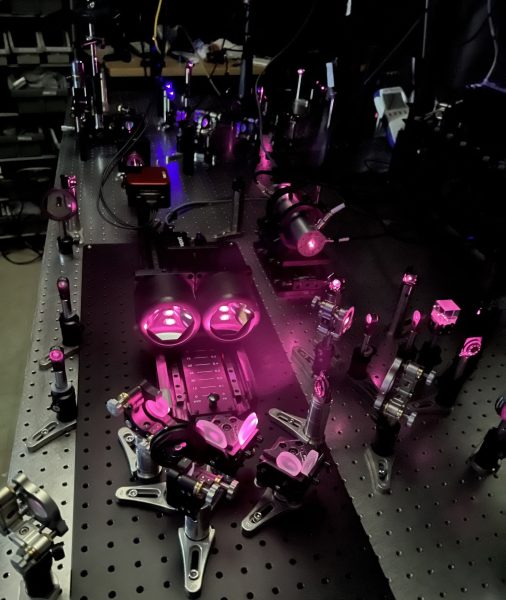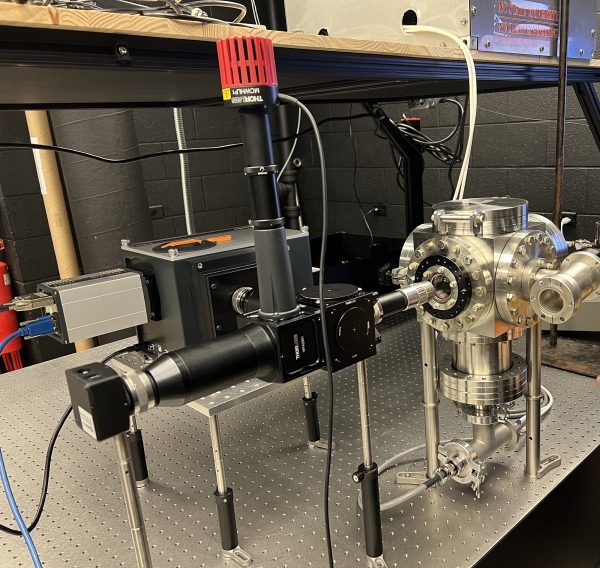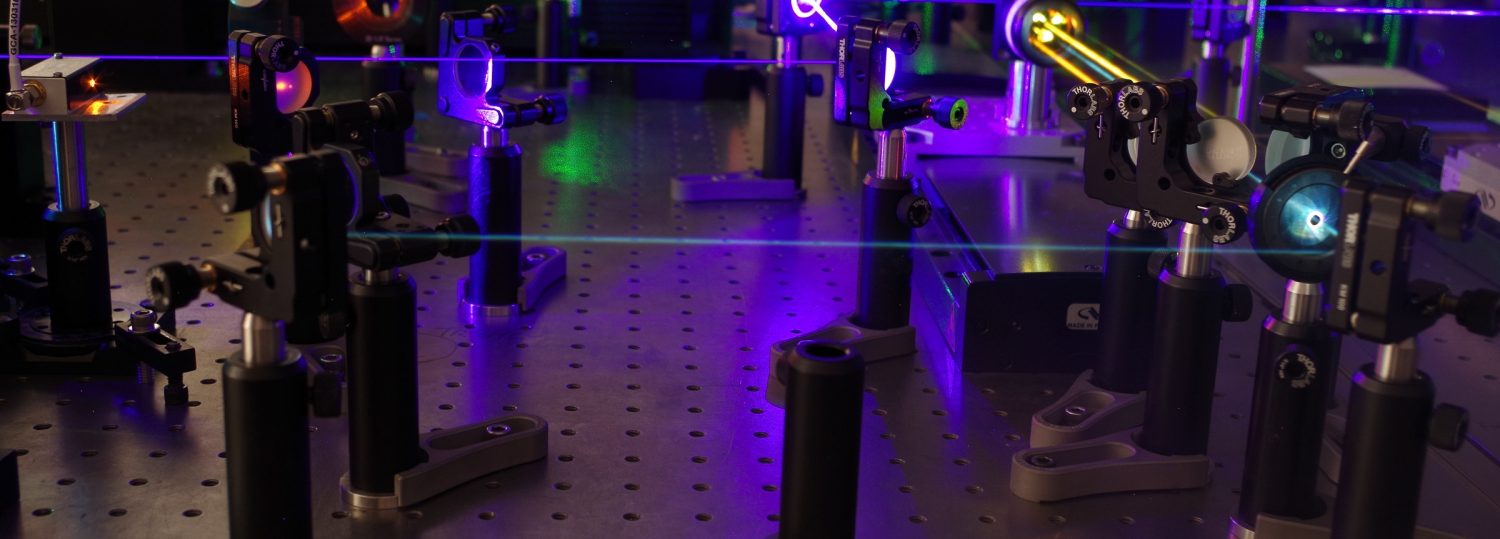
Research
Research
Thermophysical Properties of Molten Salts for Advanced Nuclear Energy Applications
The world’s increasing need for safe, abundant, reliable, and carbon-free energy sources is stimulating renewed interest in nuclear energy. Among these interests is the application of molten salts for recycling spent nuclear fuel, as the solvent/coolant in next generation nuclear reactors, and for thermal energy storage. Our research group is exploring new methods for measuring both micro- and macroscopic fluid properties of molten salts by leveraging the unique properties of short pulse lasers. In one experiment we are developing, a time-domain thermoreflectance optical measurement will obtain heat transfer properties of molten salts and other high temperature fluids. Another experiment we are developing will record the Brownian motion of microspheres to obtain the viscosity of molten salts.
|
Time-Domain Thermoreflectance of Molten Salts |
Brownian Motion of Microsphere |
Solvated Electron Dynamics in Molten Salts via Ultrafast Transient Absorption Spectroscopy
The extreme radiative environment found in molten salt reactors and pyroprocessing results in electronic excitations that could have significant consequences to the local salt chemistry and reactivity with vessel materials. In particular, the chemically reactive “solvated electron” known from aqueous solutions is also generated in molten salts and may lead to accelerated material corrosion and nanoparticle formation. However, our understanding of their chemistry and decay dynamics is in its infancy. Our group is investigating this topic by generated solvated electrons in molten salts using ultrafast transient absorption spectroscopy. In this experiment, solvated electrons are generated via photolysis from the third harmonic of our 800 nm Ti:Sapphire laser, and subsequently probed with a time-delayed broadband laser pulse. By varying the delay and measuring the change in absorption, the changing population of solvated electrons, and other species, can be obtained.
|
Ultrafast Transient Absorption Spectroscopy of Solvated Electrons in Molten Salts |
Plasma Bubble Spectroscopy: Material Quantification of Molten Salts via Spark Discharges
Establishing an online monitoring of molten salts in the extreme environment of MSRs and future pyroprocessing plants is a necessary research task for the successful operation and safeguarding of these advanced nuclear applications. The demand for greater material identification and quantification is even stricter for MSRs due to the vast number of fission products present within the fuel salt after reactor operation. Our research group is investigating an alternative method for quantifying nuclear materials in molten salts using a technique we call “plasma-bubble spectroscopy” (PBS). The strategy of our technique is to transform small quantities of bulk molten salt into a low-density vapor bubble using high voltage electric discharges. The molten salt bubble is then converted into a dilute plasma by means of a glow discharge, whose sharp atomic emission lines can be spectrally analyzed with sub-angstrom resolution. From this research we envision a low-cost, high throughput monitoring device that can operate in the extreme conditions found in MSRs and advanced fuel reprocessing. This work is being supported by a DOE NEUP grant and in collaboration with Prof. Stapelmann and Dr. Ammon Williams from Idaho National Laboratory.
|
Plasma Bubble Spectroscopy Experiment |
Laboratories
Molten-salt Ultrafast Spectroscopy Characterization Laboratory (MUSCL)
The resurgence of molten salt research in the age of ultrafast materials characterization offers us an exciting new opportunity for developing future nuclear energy technologies. MUSCL is home to an amplified femtosecond laser (Spectra-Physics, Solstice Ace) with broadly tunable Ti:Sapphire oscillator and a custom water-cooled argon glove box for molten salt preparation, transfer, and in-situ fiber-optic studies. The laboratory is equipped with furnaces for molten salt preparation including a custom vacuum furnace that allows ultrafast spectroscopy experiments on an optical table. Current funded molten salt research includes measuring molten salt thermophysical properties using time-domain thermoreflectance spectroscopy and molten salt fluid properties using laser-induced cavitation.
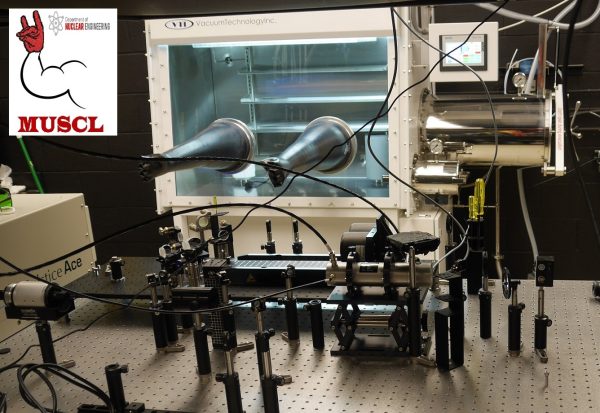
(MUSCL)
Nuclear Materials Ultrafast Spectroscopy Characterization Laboratory (Nuclear MUSCL)
More to come!!
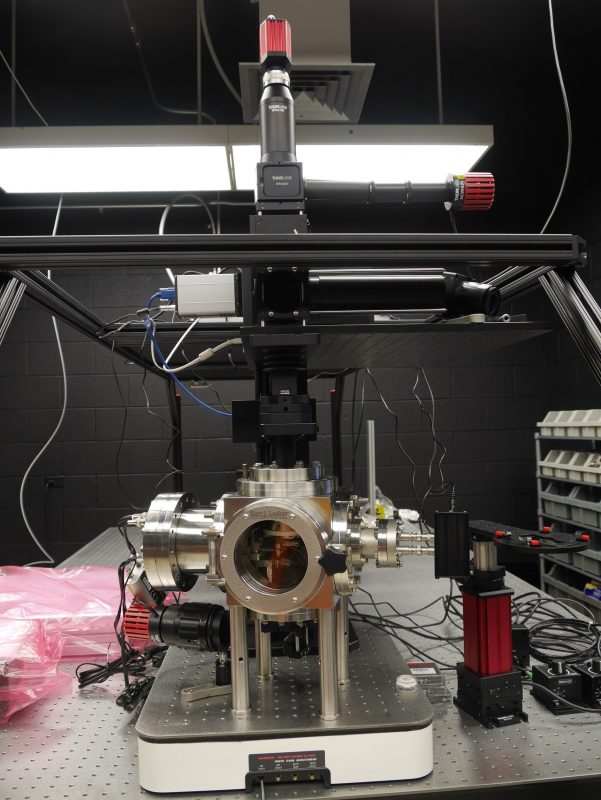
(Nuclear MUSCL)
